Dual receptacle carrier
Brockway , et al.
U.S. patent number 10,588,812 [Application Number 16/037,779] was granted by the patent office on 2020-03-17 for dual receptacle carrier. This patent grant is currently assigned to Medline Industries, Inc.. The grantee listed for this patent is Medline Industries, Inc.. Invention is credited to Emily Berman, Todd Brockway, William Elliott Brooks, Gregory J. Foster, Tambra Martin, Robert W. Sheldon, Caren Wax.
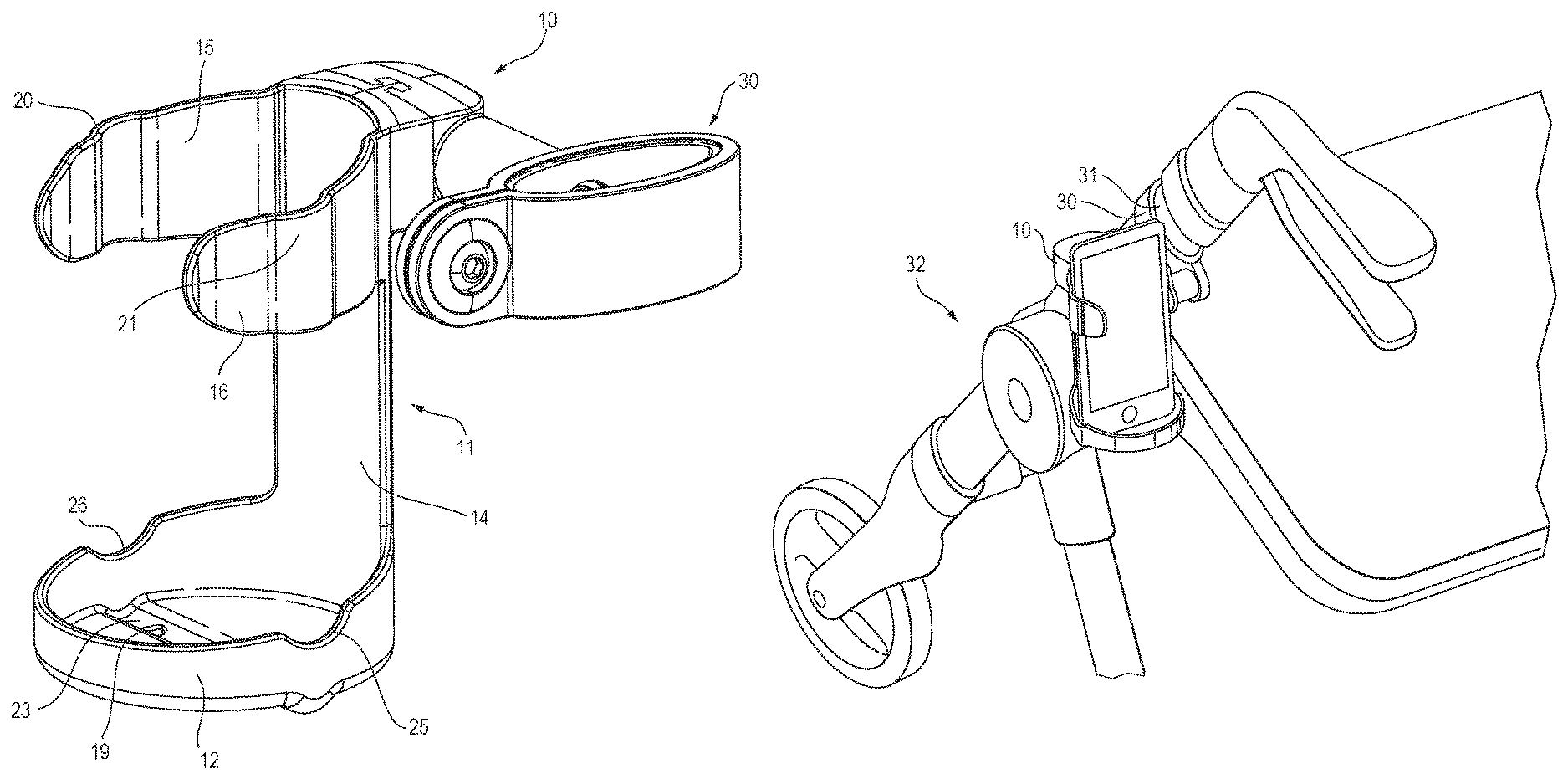

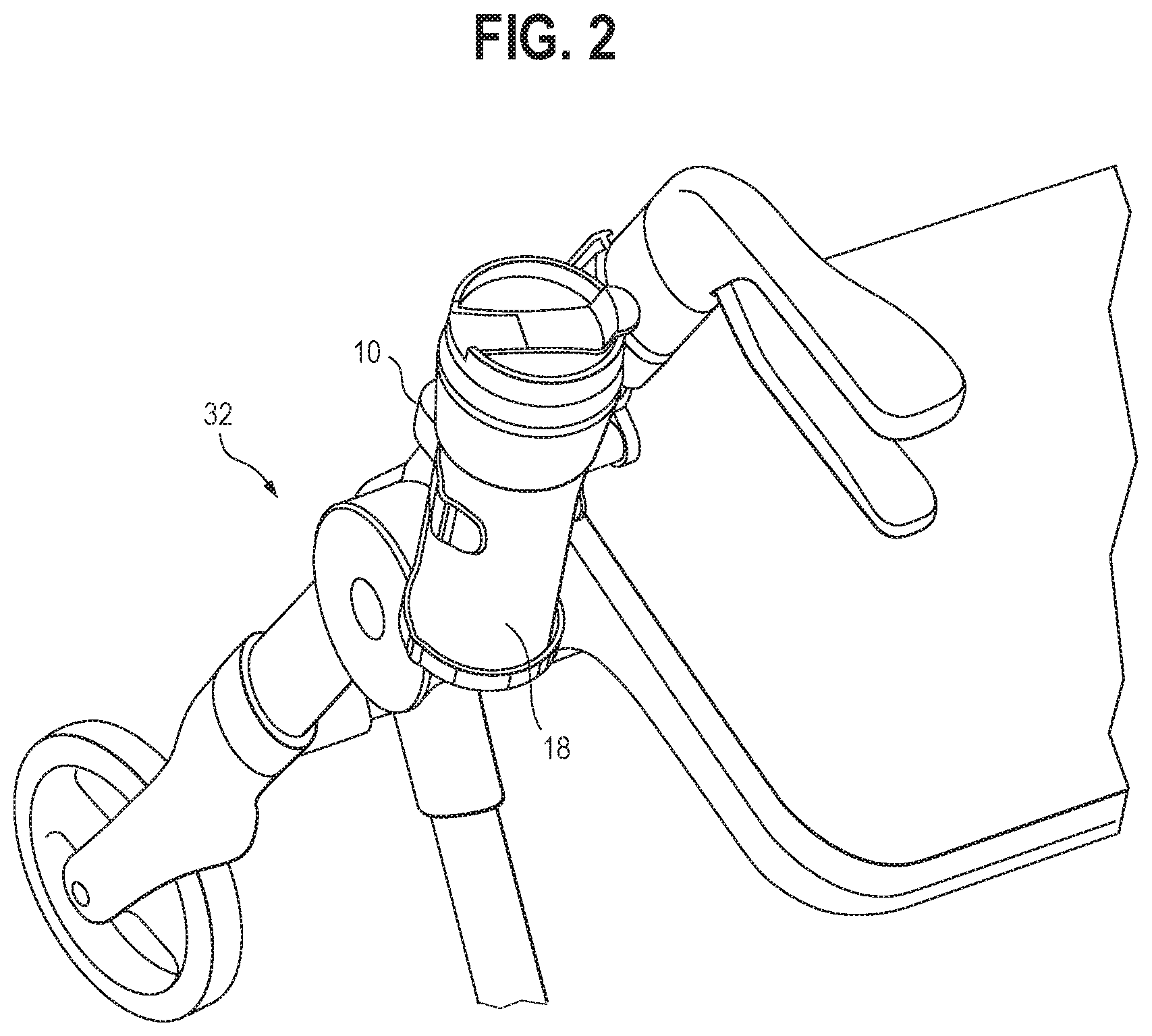
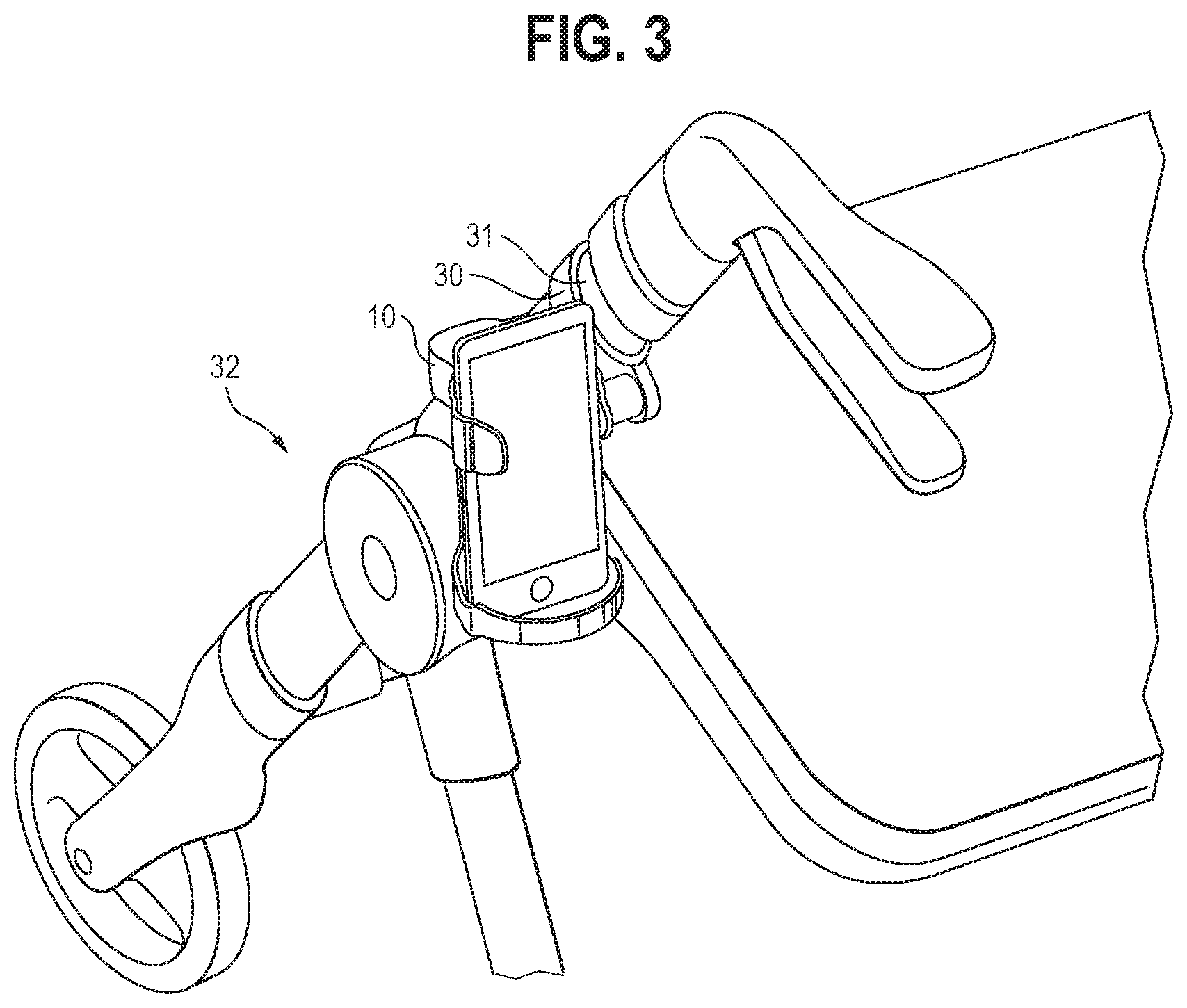
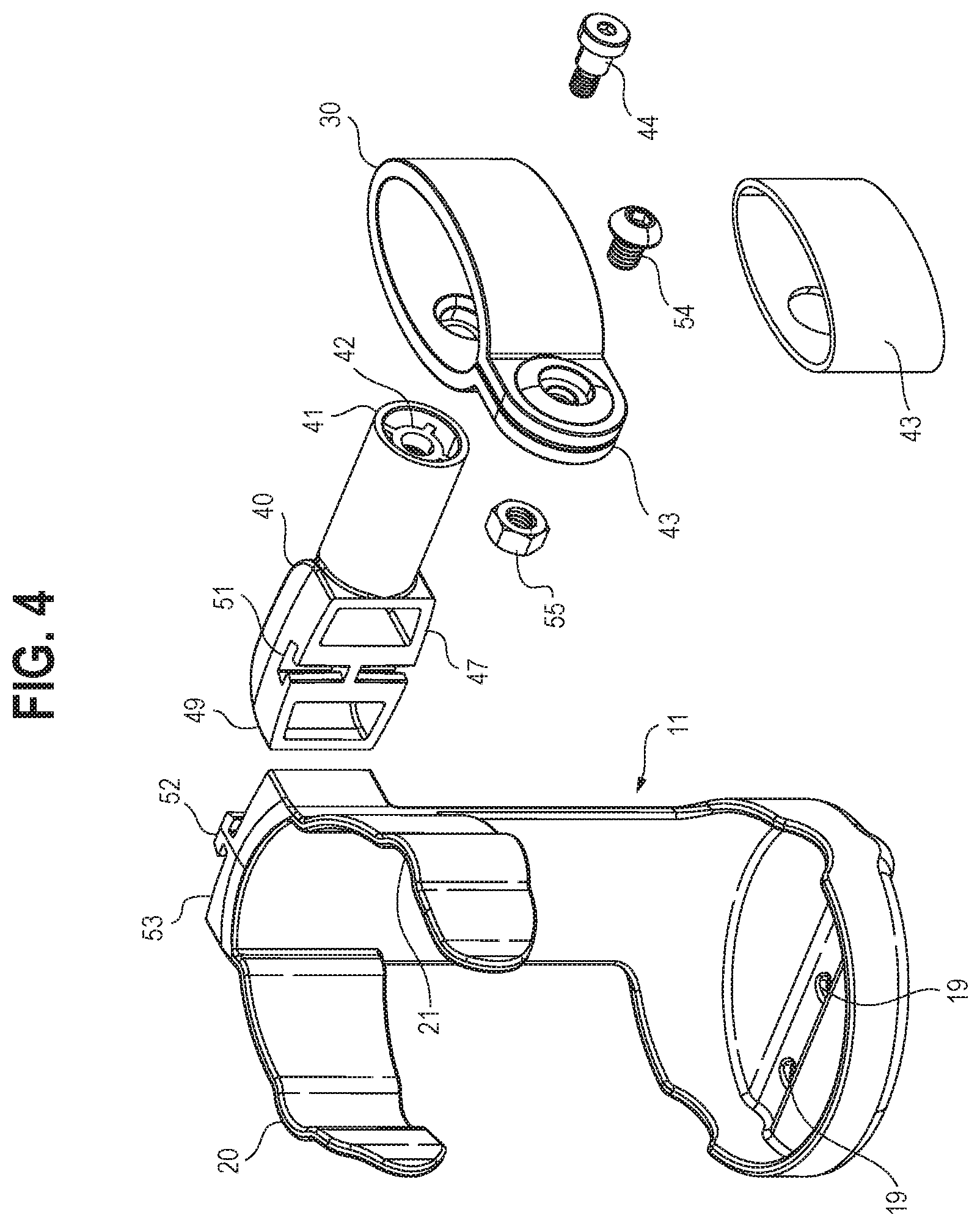
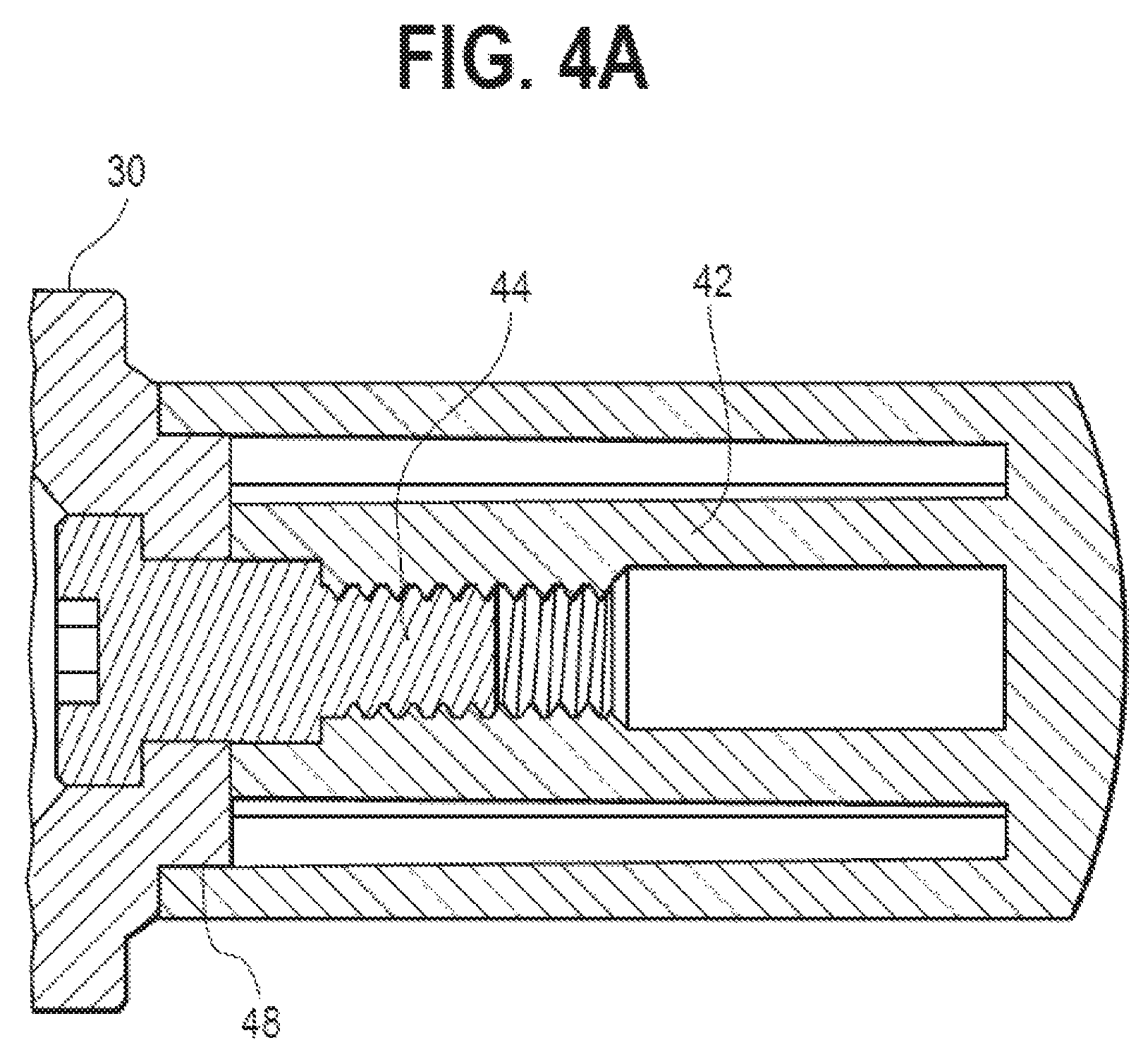

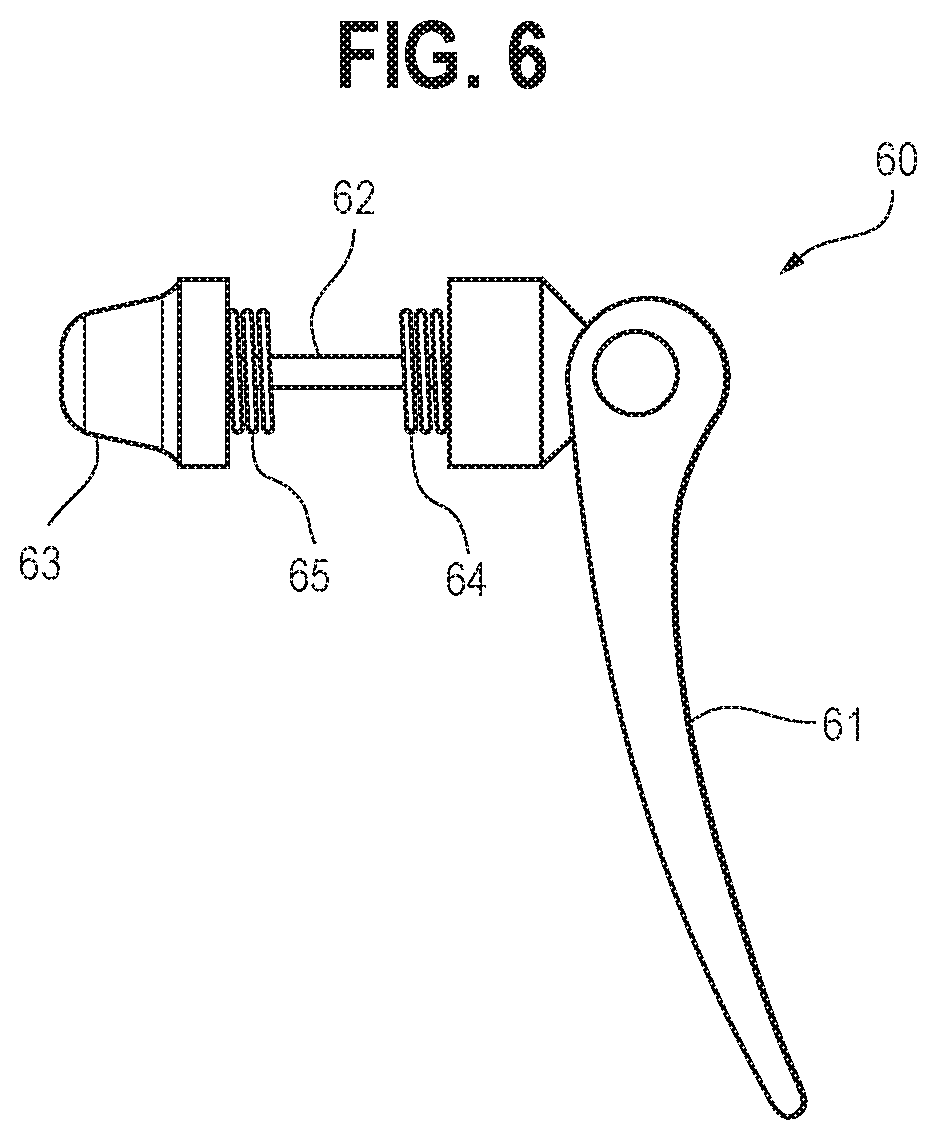
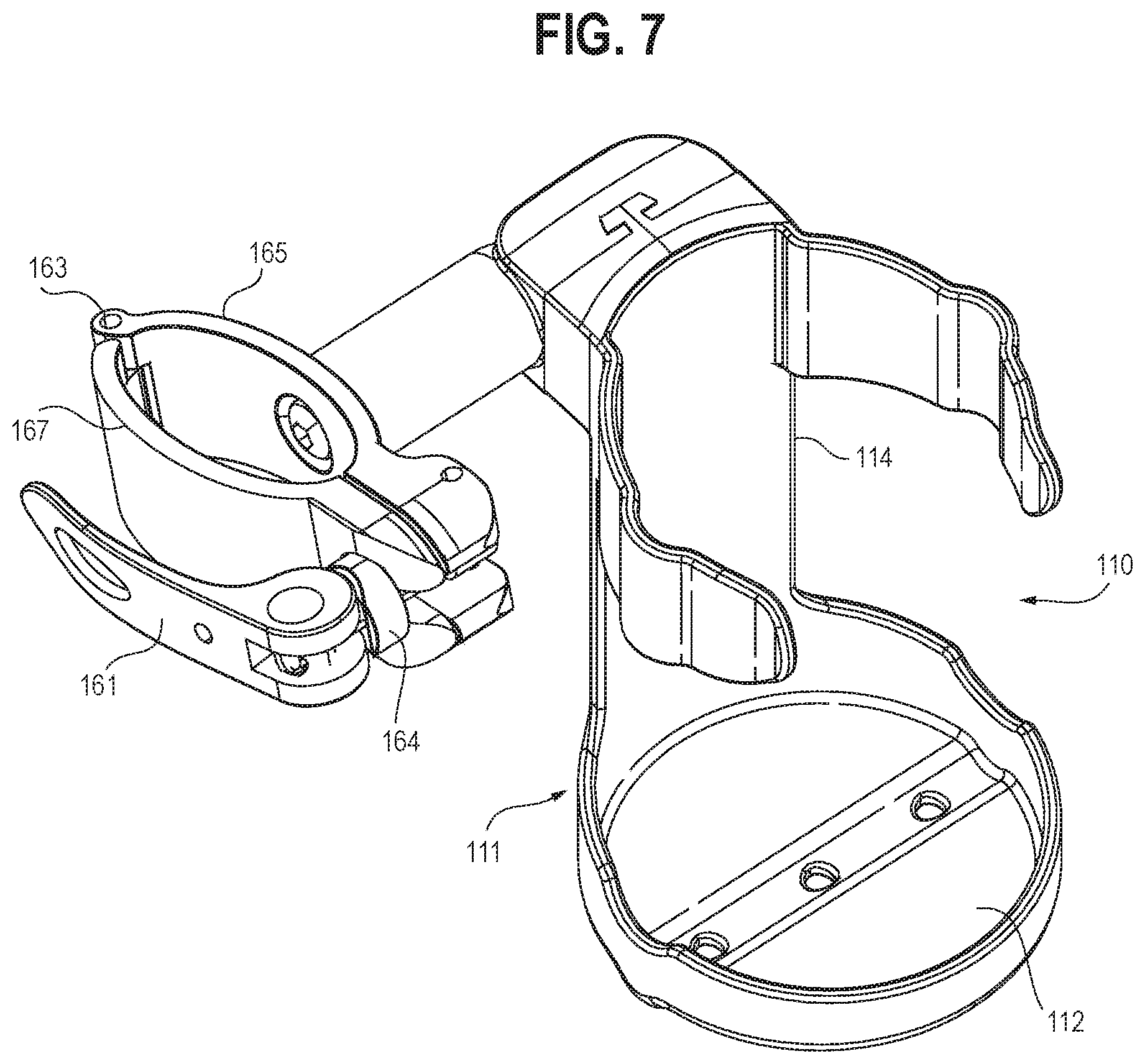


| United States Patent | 10,588,812 |
| Brockway , et al. | March 17, 2020 |
Dual receptacle carrier
Abstract
Disclosed is a dual-receptacle carrier that is generally configured for attachment to a rollator or walker and that is configured to retain either a beverage or a mobile device, such as a cellular telephone. The device comprises a body, a base, and first and second opposing retention arm portions that are configured as a receptacle for a beverage. The first and second opposing retention arm portions and base include recesses that define a receptacle for an electronic device.
| Inventors: | Brockway; Todd (Vernon Hills, IL), Berman; Emily (Park Ridge, IL), Wax; Caren (Deerfield, IL), Martin; Tambra (Trevor, WI), Brooks; William Elliott (Chicago, IL), Sheldon; Robert W. (Winnetka, IL), Foster; Gregory J. (Chicago, IL) | ||||||||||
|---|---|---|---|---|---|---|---|---|---|---|---|
| Applicant: |
|
||||||||||
| Assignee: | Medline Industries, Inc.
(Northfield, IL) |
||||||||||
| Family ID: | 63364453 | ||||||||||
| Appl. No.: | 16/037,779 | ||||||||||
| Filed: | July 17, 2018 |
Prior Publication Data
| Document Identifier | Publication Date | |
|---|---|---|
| US 20190029913 A1 | Jan 31, 2019 | |
Related U.S. Patent Documents
| Application Number | Filing Date | Patent Number | Issue Date | ||
|---|---|---|---|---|---|
| 62537817 | Jul 27, 2017 | ||||
| Current U.S. Class: | 1/1 |
| Current CPC Class: | A61H 1/00 (20130101); A61H 3/00 (20130101); A61H 2201/1635 (20130101); A61H 2003/002 (20130101) |
| Current International Class: | A61H 3/00 (20060101); A61H 1/00 (20060101) |
| Field of Search: | ;224/407,926 |
References Cited [Referenced By]
U.S. Patent Documents
| 3734439 | May 1973 | Wintz |
| 4535923 | August 1985 | Manke |
| 5628486 | May 1997 | Rossman |
| 5745565 | April 1998 | Wakefield |
| 5996957 | December 1999 | Kurtz |
| 6390427 | May 2002 | McConnell |
| D516393 | March 2006 | Wickenhauser |
| 7017243 | March 2006 | Carnevali |
| 7077302 | July 2006 | Chuang |
| 7090183 | August 2006 | Heybl |
| D673816 | January 2013 | Phillips |
| D679146 | April 2013 | Rincon |
| 8500076 | August 2013 | Lai |
| 8651350 | February 2014 | Onogi |
| 8919622 | December 2014 | Gabriel |
| 9399479 | July 2016 | Chen |
| D771525 | November 2016 | Kim |
| 9944209 | April 2018 | Carnevali |
| 9950731 | April 2018 | Kim |
| 2014/0284443 | September 2014 | Forbes |
| 2015/0001359 | January 2015 | Catchings |
| 2018/0099713 | April 2018 | Oste |
Other References
|
Search Report from UK Intellectual Property Office for UK Patent Application No. 1812102.0 dated Jan. 9, 2019; 1 page. cited by applicant. |
Primary Examiner: Waggenspack; Adam J
Attorney, Agent or Firm: Fitch, Even, Tabin & Flannery LLP
Parent Case Text
CROSS-REFERENCE TO RELATED APPLICATION(S)
This application claims the benefit of U.S. Provisional Application No. 62/537,817, filed Jul. 27, 2017, the contents of which are incorporated herein by reference in their entirety.
Claims
What is claimed is:
1. A carrier device comprising: a body having a base and an extension portion; first and second curved opposing retention arms connected to said extension portion and opposing said base, said retention arms cooperating with said base to define a beverage receptacle; a first recess in said first retention arm and a second recess in said second retention arm, said first and second recesses forming a slot; a base recess in said base, said slot and said base recess aligning and cooperating to form a device receptacle wherein said base further comprises a pair of opposing base cutouts aligning and cooperating with said first and second recesses to form a second device receptacle.
2. The device of claim 1, wherein said first and second retention arms are each connected to said extension portion at one end and not connected to each other at the opposite end.
3. The device of claim 2, further comprising a tubular mounting bracket.
4. The device of claim 3, further comprising a pivoting mechanism enabling the body to pivot with respect to said bracket.
5. The device of claim 4, said pivoting mechanism comprising a shaft coupler, the shaft coupler having a base end rotatably mounted with respect to said bracket and a body mounting region, said body mounting region cooperating with a coupler mounting region disposed on said body.
6. The device of claim 5, one of said body mounting region and said coupler mounting region including a plug portion and the other of said body mounting region and said coupler mounting region comprising a socket portion, said plug portion cooperating with said socket portion for fixing said body relative to said shaft coupler.
7. The device of claim 5, one of said bracket and said shaft coupler including plural splines and the other of said bracket and said shaft coupler including plural indexing nubs thereby permitting indexed rotation of said shaft coupler relative to said bracket, the device including a spring normally biasing the indexing nubs and splines into an engaged position.
8. The device of claim 2, comprising a quick-release mechanism for attachment of said bracket to a tubular frame.
9. A mobility device comprising a user-supporting frame having at least one user-gripping portion, said frame including at least one tubular section, and, mounted to said tubular section, the carrier of claim 1.
Description
BACKGROUND
Walkers, rollators, and other mobility-assisting devices are commonly used by the elderly and by others with limited physical mobility. It is known to provide various accessories for such mobility-assisting devices. For instance, the prior art has provided accessories such as seats and cup holders.
Now, a dual-receptacle carrier has been devised, the carrier being attachable to a mobility-assisting device such as a walker or rollator and being equipped to retain either a beverage or a mobile device, such as a cellular telephone. Generally, the carrier comprises a body having a base, an extension, and first and second opposing retention arms or arm portions that cooperate with the base to form a beverage receptacle. The arm portions are each provided with an arm portion recess and the base portion is provided with a base recess, these recesses cooperating to form a receptacle for an electronics device. The body is generally pivotable relative to a mounting bracket to enable the user to adjust the operating angle of the device. Desirably, the device is equipped with a quick-release mechanism to allow the user to adjust the position of the device along a tube structure of a walker or rollator.
BRIEF DESCRIPTION OF THE DRAWINGS
FIG. 1 is a perspective view of an exemplary dual-receptacle carrier in accordance with one embodiment.
FIG. 2 is a perspective view illustrating use of the carrier of FIG. 1 mounted onto a rollator and in use as a receptacle for a beverage.
FIG. 3 is a perspective view illustrating use of the carrier of FIG. 1 mounted onto a rollator and in use as a receptacle for a cellular telephone.
FIG. 4 is a front exploded view of the device shown in FIG. 1.
FIG. 4A is a relatively enlarged top view in cross section of a portion the device shown in FIG. 1 when mounted onto a tubular frame member of a mobility device.
FIG. 5 is a rear exploded view of the device shown in FIG. 1.
FIG. 6 is a perspective view of a quick-release mechanism useful in connection with the device of FIG. 1.
FIG. 7 is a perspective view of an alternative embodiment of a dual-receptacle carrier, showing a quick-release lever in an engaged position.
FIG. 8 is a perspective view of the carrier shown in FIG. 7, illustrating the quick-release lever in a disengaged position.
FIG. 9 is a perspective view of the shaft coupler and bracket of the carrier shown in FIG. 7.
FIG. 10 is a top view in partial cross-section illustrating the connection between the shaft coupler and bracket of the carrier shown in FIG. 7.
DETAILED DESCRIPTION
With reference now to FIG. 1, the illustrated carrier 10 includes a body 11 having a base 12 and an extension 14 that separates the base 10 from an upper region. The upper region includes first and second generally curved opposing retention arm portions 15, 16. As illustrated, the arm portions 15, 16 comprise separate retention arms, although in practice a single curved band may be employed. As is conventional, the first and second retention arms and base cooperate to form a beverage receptacle, as best seen in FIG. 2. With reference to FIG. 2, a beverage is disposed in a suitable vessel, such as the illustrated mug 18. The mug 18 rests on the base 12 and is retained on the base via the retention arms 15, 16. Weep holes 19 (seen also FIG. 4) allow for drainage of any condensate from the beverage.
With further reference to FIG. 1, the first retention arm 15 includes a first recess 20 and the second retention arm 16 includes a second recess 21, these cooperating to form a slot. This slot is aligned with and cooperates with a recess 23 disposed on the base to form a receptacle for an electronic device, as best seen in FIG. 3. The base further includes a pair of base cutouts 25, 26. The cutouts 25, 26 can accommodate larger electronic devices placed within the retention arm portions 15, 16, which are resilient and which can be biased slightly outwardly (not shown) when necessary to accommodate such larger electronic devices.
The carrier includes a bracket 30 for mounting to a tubular frame portion 31 of the rollator 32 as shown in FIGS. 3 and 4. The bracket may be mounted to other frame portions of the rollator. As illustrated, the bracket has an oval shape to accommodate the oval-shaped tubular frame portion 31 of the rollator 32. Many mobility devices are composed of tubular frame portions having a circular cross section, and the bracket may be correspondingly shaped when intended for use with such mobility devices.
The body may be pivoted with respect to the bracket to allow the user to adjust the angle of the body portion. The pivoting mechanism is best explained with respect to FIGS. 4, 4A, and 5, which show the body 11 and bracket 30 and a shaft coupler 40. The shaft coupler 40 has a base end 41 having a socket 42 (FIG. 4 only) that receives a mounting screw 44. This is seen also in FIG. 4A. The internal surface 45 (FIG. 5 only) of the head of the screw 44 frictionally engages the socket 42 to accommodate rotation of the base end 41 of the shaft coupler 40 with respect to the bracket 30. Additionally, a friction ring 48 is snugly received within a hollow at the base end 41 of the shaft coupler 40. The shaft coupler has a body mounting region 49 that includes a radial face 47. The radial face 47 includes a socket portion 51 that cooperates with a plug portion 52 that is disposed on a coupler mounting region 53 of the body 11. The plug and socket portion may be reversed (not shown) such that the plug portion is disposed on the shaft coupler and the socket portion is disposed on the body. When the plug and socket portions are engaged, the body 11 is fixed with respect to the shaft coupler 40, such that, when the shaft coupler 40 rotates at its base 41, the body 11 is thereby caused to pivot with respect to the bracket 30.
As shown in FIG. 4, the bracket 30 is equipped with a retaining nut 54 and bolt 55 for purposes of mounting the bracket to the mobility device. An optional elastomeric gasket 43 (FIGS. 4 and 5 only) may be provided to enhance the stability of the device.
In an alternative embodiment, the quick release mechanism 60 shown in FIG. 6 may be employed. This mechanism allows a frictional fit of the bracket 33 onto the tubular frame of the mobility device. This mechanism 60 comprises a handle 61, shaft 62, tension-adjusting nut 63, and springs 64, 65. When a user lifts the handle 61, the frictional fit of the bracket to the tubular device will relax, thereby permitting the user to slide the bracket along the tubular frame of the mobility device. The quick-release device may be completely removed by unthreading the tension-adjusting nut 63 to allow installation or removal of the bracket.
With reference now to the carrier 110 shown in FIG. 7, the body 111, base 112, and extension 114 are generally similarly configured to those of the carrier depicted in FIG. 1. In the illustrated embodiment, a quick-release lever 161 is pivotally mounted to a first bracket portion 165 of bracket 130, which is connected to the second bracket portion 167 at a hinge 163. A locking member 164 (FIG. 7) may be provided to ensure proper fitting of the bracket 130 onto a tubular frame portion of a rollator or other mobility-assisting device, whereby the end of the lever operates as a cam to bias the locking member and to thereby firmly secure the first and second bracket portions 165, 167. This locking member 164 is received in a recess 166 (FIG. 8) of the second bracket portion 168. Optionally, the locking member may comprise or include a compressible material or spring.
When engaged, the quick release mechanism secures the first and second bracket portions 165, 167 to one another to thereby frictionally secure the carrier to the tubular frame of the mobility-assisting device. When disengaged, the quick-release mechanism permits attachment or removal of the carrier, and also permits adjustment of the axial position of the carrier on the tubular frame portion.
With reference now to FIGS. 9 and 10, the shaft coupler 140 is equipped with plural splines 170 that engage a series of indexing nubs 171 disposed on the bracket 130. A securement bolt 172 is contained in a sleeve 173 and received in a socket 174 (FIG. 10). The construction is equipped with a compression spring 175 that normally biases the bolt 172 in the direction of the shaft coupler 140 to cause the splines 170 to engage the nubs 171 to thereby inhibit relative rotation of the bracket 130 and shaft coupler 140. The splines 170 and nubs 171 operate together to create an indexing mechanism that allows the body 111 to rotate in an indexed manner relative to the bracket 130. More specifically, when it is desired to rotate the body 111 relative to the bracket 130, the user exerts a pulling force to separate the body 111 and bracket 130 to temporarily disengage the splines and indexing nubs. After rotating the body to the desired indexed position, the user releases the pulling force. Expansion of the spring 175 biases the bracket 130 and body 111 towards one another, thereby causing re-engagement of the splines and indexing nub. The bolt 172 remains affixed within the socket 174, allowing the nubs 171 to translate along the sleeve 173 as the splines 170 and nubs 171 are brought into and out of engagement.
As illustrated, the recesses in the arm portions are generally axially aligned with the recess in the base. In an alternative embodiment (not shown) the recesses in the arm portions may be slightly rearwardly offset relative to the base surface and angled at a slight oblique angle. This will result in carriage of a retained electronic device at an angle, such that the device may be carried generally facing upwardly with the screen of the device pointed towards the user's eyes. In this configuration, the base may be oriented to be level with respect to the ground, such that a beverage will be retained in an upright position even though the device will be in a more user-readable position.
The carrier may be made of any suitable material, such as polypropylene.
It is therefore seen that the foregoing teachings provide a dual-receptacle carrier that can accommodate both a beverage and a cellular telephone or other electronic device. The carrier can be used on a conventional walker or rollator, or other mobility-assisting device.
Uses of singular terms such as "a," "an," are intended to cover both the singular and the plural, unless otherwise indicated herein or clearly contradicted by context. The terms "comprising," "having," "including," and "containing" are to be construed as open-ended terms. Any description of certain embodiments as "preferred" embodiments, and other recitation of embodiments, features, or ranges as being preferred, or suggestion that such are preferred, is not deemed to be limiting. The invention is deemed to encompass embodiments that are presently deemed to be less preferred and that may be described herein as such. All methods described herein can be performed in any suitable order unless otherwise indicated herein or otherwise clearly contradicted by context. The use of any and all examples, or exemplary language (e.g., "such as") provided herein, is intended to illuminate the invention and does not pose a limitation on the scope of the invention. Any statement herein as to the nature or benefits of the invention or of the preferred embodiments is not intended to be limiting. This invention includes all modifications and equivalents of the subject matter recited herein as permitted by applicable law. Moreover, any combination of the above-described elements in all possible variations thereof is encompassed by the invention unless otherwise indicated herein or otherwise clearly contradicted by context. The description herein of any reference or patent, even if identified as "prior," is not intended to constitute a concession that such reference or patent is available as prior art against the present invention. No unclaimed language should be deemed to limit the invention in scope. Any statements or suggestions herein that certain features constitute a component of the claimed invention are not intended to be limiting unless reflected in the appended claims. Neither the marking of the patent number on any product nor the identification of the patent number in connection with any service should be deemed a representation that all embodiments described herein are incorporated into such product or service.
* * * * *
D00000

D00001

D00002

D00003

D00004

D00005

D00006

D00007

D00008

D00009

D00010

XML
uspto.report is an independent third-party trademark research tool that is not affiliated, endorsed, or sponsored by the United States Patent and Trademark Office (USPTO) or any other governmental organization. The information provided by uspto.report is based on publicly available data at the time of writing and is intended for informational purposes only.
While we strive to provide accurate and up-to-date information, we do not guarantee the accuracy, completeness, reliability, or suitability of the information displayed on this site. The use of this site is at your own risk. Any reliance you place on such information is therefore strictly at your own risk.
All official trademark data, including owner information, should be verified by visiting the official USPTO website at www.uspto.gov. This site is not intended to replace professional legal advice and should not be used as a substitute for consulting with a legal professional who is knowledgeable about trademark law.